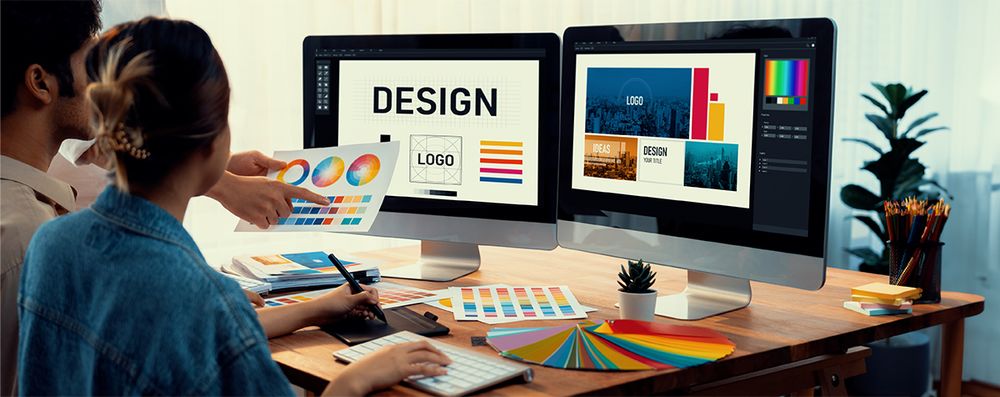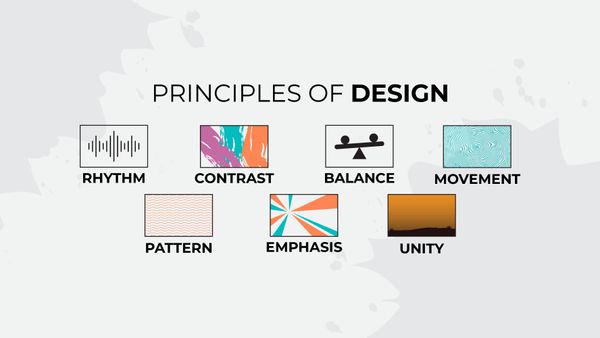What is the Role of Design Principles in the Creative Process for Graphic Designing?
Graphic design is a powerful medium combining art, technology, and communication to convey ideas, messages, and emotions visually. From logos and posters to websites and social media graphics, the world of graphic design is constantly evolving. The fundamental design principles at the heart of this evolution are crucial in shaping and guiding the creative process.
In this blog, we explore the significance of design principles and how they empower graphic designers to create visually impactful and aesthetically pleasing designs. We will also talk about how effective it is to enrol to an online graphic design courses with certificates for the best learning experience.
What are Design Principles?
Design principles are fundamental guidelines that govern the arrangement and composition of visual elements in graphic design. They are the building blocks upon which creative ideas are developed and refined. These principles provide designers with a framework to ensure their work is visually coherent, balanced, and effectively communicating the intended message.
Some common design principles include:
a) Balance: Achieving visual stability by distributing elements evenly throughout the design.
b) Proportion: Ensuring that the size and scale of elements harmonise with each other.
c) Contrast: Using colour, size, and shape differences to create visual interest and emphasis.
d) Alignment: Arranging elements along a common axis to create unity and organisation.
e) Repetition: Reusing visual elements to establish consistency and reinforce a sense of unity.
f) Hierarchy: Organising elements in order of importance to guide the viewer's attention.
Guiding the Creative Process
The creative process in graphic design involves ideation, iteration, and refining concepts to arrive at the final design. Design principles serve as a compass during this journey, helping designers navigate through the challenges and possibilities that arise. Let's explore how these principles influence different stages of the creative process:
a) Ideation: During the initial brainstorming phase, design principles inspire designers to explore different possibilities for arranging elements and creating visual impact. For instance, they might experiment with balance techniques, such as symmetrical or asymmetrical designs, to achieve the desired effect.
b) Concept Development: As designers develop their ideas into tangible concepts, design principles provide the framework for evaluating and refining the designs. They help identify any visual imbalances, lack of hierarchy, or inadequate contrast that might hinder the effectiveness of the design.
c) Iteration: The creative process often involves multiple iterations and revisions. Design principles act as a yardstick against which designers can assess their work. These principles also offer creative solutions to overcome design challenges and improve the overall composition.
d) Client Communication: Design principles enable designers to articulate their choices effectively when presenting design concepts to clients. By explaining how the principles are applied, designers can justify their design decisions and ensure the clients understand the rationale behind the creative choices.
Enhancing User Experience
Graphic design is not merely about creating visually appealing artwork; it also significantly enhances user experience (UX). Design principles contribute to a positive UX in several ways:
a) Clarity and Readability: Applying design principles such as alignment and contrast ensures the content is easy to read and understand. This is especially crucial in web design and printed materials.
b) Navigation and Flow: Through hierarchy and proportion, designers can guide users through the design, emphasising important elements and creating a smooth flow of information.
c) Brand Identity: Consistency achieved through repetition and proportion reinforces brand identity, making it easily recognisable and memorable.
Fostering Creativity and Innovation
While design principles provide a structured approach but foster creativity and innovation, understanding these principles allows designers to intentionally bend and break the rules to create unique, attention-grabbing designs. Knowing how to balance asymmetrical elements or use unconventional colour schemes can lead to ground breaking designs that stand out from the crowd.
Design principles form the backbone of graphic design, acting as a compass throughout the creative process. By effectively understanding and applying these principles, designers can create visually appealing, functional, and meaningful designs. Balancing creativity with structure and design principles empower graphic designers to craft visual experiences that leave a lasting impact on audiences and fulfil their communication objectives. As technology and design trends evolve, a firm grasp of design principles will remain a timeless and indispensable asset for every graphic designer.
Choosing online graphic design courses with certificates in design principles can offer many benefits for aspiring graphic designers and even experienced professionals looking to enhance their skills. Here are some of the key advantages:
Comprehensive Learning through Online graphic design courses on design principles provides in-depth knowledge of the fundamental principles that govern effective graphic design. Students thoroughly understand concepts like balance, contrast, alignment, and hierarchy, which form the foundation of compelling visual compositions.
Many graphic design online courses incorporate practical assignments and projects that challenge students to apply the design principles they have learned. These hands-on experiences help reinforce the concepts and build a strong portfolio showcasing their skills.
Online courses often utilise industry-standard graphic design software, allowing students to become familiar with the tools commonly used in the profession. Gaining proficiency in these tools enhances their employability and productivity as graphic designers.
An graphic design online course will teach you the design principles can significantly enhance a designer's portfolio. It showcases a broader skill set, highlighting the ability to create visually appealing and effective designs that adhere to established principles.
In conclusion, choosing online graphic design courses with certificates in design principles offers aspiring and established graphic designers numerous advantages. The graphic design courses fees are decent and budget- friendly. From acquiring essential design skills to building a strong portfolio and staying up-to-date with industry trends, these courses pave the way for a successful and fulfilling career in graphic design.




